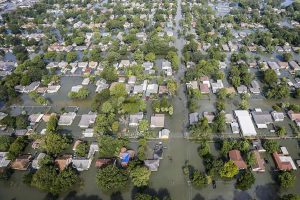
Introduction
Climate change is no longer a future concern; it’s a present challenge that the real estate industry is actively addressing. In this article, we will delve into how the industry is navigating climate change, focusing on innovative strategies, potential impacts on property markets, investment opportunities, and providing a comprehensive comparative table of climate-resilient properties.
The Impact of Climate Change
The real estate sector is grappling with the impact of climate change, which is already altering the landscape. Rising sea levels, more frequent and severe weather events, and changing climate patterns are affecting property values, insurance costs, and the viability of certain regions. The industry is no longer passive but proactive, working to adapt and build resilience.
Innovative Strategies for Climate Resilience
1. Green Building Practices
At the core of climate resilience in real estate are green building practices. Developers are integrating energy-efficient designs, renewable energy sources, and sustainable building materials into their projects. These features reduce a property’s environmental footprint and enhance its long-term value by lowering operational costs.
2. Coastal and Floodplain Management
In regions vulnerable to rising sea levels and coastal flooding, real estate firms are investing in protective infrastructure. This includes constructing flood barriers and elevated building designs that can withstand flooding and storm surges. Additionally, coastal land management is being integrated into property development to minimize risks associated with sea-level rise and erosion.

3. Insurance-Backed Resilience
Property owners are increasingly turning to insurance policies that offer coverage for climate-related damages. These insurance policies not only provide a safety net for property owners but also incentivize them to make climate-resilient improvements. By reducing the financial burden of climate-related damages, property owners can focus on implementing mitigation measures.
Comparative Table of Climate-Resilient Properties
For a comprehensive understanding of the real estate market’s response to climate challenges, here’s a comparative table of climate-resilient properties:
| Property | Location | Green Features | Flood Protection | Energy Efficiency |
|---|---|---|---|---|
| Eco Oasis Residences | Miami, FL | Solar Panels, Green Roof | Flood Barriers, Elevation | Energy-Star Certified |
| Sustainable Urban Lofts | New York, NY | Low-Energy Lighting, | Storm Surge Protection, | LEED Platinum Certified |
| Efficient HVAC | Reinforced Foundations | |||
| Green Haven Estates | Los Angeles, CA | Sustainable Landscaping, | Flood-Resistant Design | Smart Home Systems |
| Energy-Efficient HVAC | ||||
| Waterfront Eco Village | Seattle, WA | Geothermal Heating, | Flood-Resistant Features | Solar Power |
| Rainwater Harvesting | Elevated Structures | |||
| Leafy Retreat Homes | Portland, OR | Passive Solar Design, | Coastal Land Management | Energy-Efficient Windows |
| Energy-Efficient Insulation |
Potential Impacts on Property Markets
The real estate market is already undergoing transformation due to climate challenges. Properties that demonstrate climate resilience are gaining attention from buyers and investors. In contrast, properties in high-risk areas may witness reduced demand and declining values. This change in demand highlights the shifting priorities of property buyers and investors.
Investment Opportunities
Real estate investors have a unique opportunity to invest in climate-resilient properties. These investments contribute to a more sustainable and resilient future while potentially offering reduced risks and attractive returns. The real estate industry is uniquely positioned to lead the way in building a more sustainable and climate-resilient future, recognizing the interconnectedness of environmental health and property market stability, necessitating immediate action.
Conclusion
The real estate industry is at a critical juncture, confronted by the escalating challenges of climate change. As our world faces rising sea levels, extreme weather events, and changing climate patterns, the real estate sector is not just responding but leading the way in building a resilient future. This article has explored the innovative strategies employed to enhance climate resilience, the potential impacts on property markets, and the promising investment opportunities.
Innovations in green building practices, coastal and floodplain management, and insurance-backed resilience have transformed the real estate landscape. Property buyers and investors are increasingly drawn to climate-resilient properties, recognizing their long-term value and environmental sustainability.










